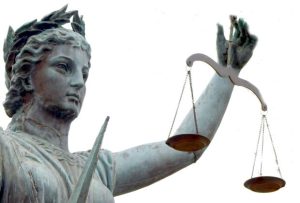 In every negligence action for injuries or wrongful death the plaintiff must establish (1) a duty owed by the defendant; (2) the defendant’s breach of the duty; and (3) and that said breach proximately caused the damages claimed.
In every negligence action for injuries or wrongful death the plaintiff must establish (1) a duty owed by the defendant; (2) the defendant’s breach of the duty; and (3) and that said breach proximately caused the damages claimed.
In negligence actions Florida courts follow the more likely than not standard of causation and require proof that the negligence probably caused the plaintiff’s injury. See Tampa Electric Co. v. Jones, 138 Fla. 746, 190 So. 26 (1939); Greene v. Flewelling, 366 So.2d 777 (Fla. 2d DCA 1978), cert. denied, 374 So.2d 99 (Fla. 1979); Bryant v. Jax Liquors, 352 So.2d 542 (Fla. 1st DCA 1977), cert. denied, 365 So.2d 710 (Fla. 1978). Prosser explored this standard of proof as follows:
On the issue of the fact of causation, as on other issues essential to his cause of action for negligence, the plaintiff, in general, has the burden of proof. He must introduce evidence which affords a reasonable basis for the conclusion that it is more likely than not that the conduct of the defendant was a substantial factor in bringing about the result. A mere possibility of such causation is not enough; and when the matter remains one of pure speculation or conjecture, or the probabilities are at best evenly balanced, it becomes the duty of the court to direct a verdict for the defendant.
The north star of the law of causation is the landmark supreme court decision in Gooding v. University Hospital Building, Inc., 445 So. 2d 1015, 1020 (Fla. 1984). The Florida Supreme Court described the case as follows:
Emily Gooding, personal representative of Mr. Gooding’s estate, brought a wrongful death action against the hospital alleging negligence by the emergency room staff in not taking an adequate history, in failing to physically examine Mr. Gooding, and in not ordering the laboratory tests necessary to diagnose and treat Mr. Gooding’s abdominal aneurysm before he bled out and went into cardiac arrest. Mrs. Gooding’s expert witness, Dr. Charles Bailey, a cardiologist, testified that the inaction of the emergency room staff violated accepted medical standards [i.e., there was a breach]. Dr. Bailey, however, failed to testify that immediate diagnosis and surgery more likely than not would have enabled Mr. Gooding to survive.
The trial court denied the hospital’s motion for directed verdict on causation. The jury found the hospital liable and awarded damages. The hospital appealed. The First District Court of Appeal reversed on the grounds that the trial court should have directed a verdict in favor of the hospital because Mr. Gooding’s chances of survival under the best of conditions were no more than even. The plaintiff, therefore, could not meet the more likely than not test for causation. The Supreme Court affirmed the DCA on this holding.
Continue reading
 Since 1990, Florida has maintained a statute that has come to be commonly referred to as the “Free Kill” law. The statute, section 768.21(8), is located in the damages portion of the Wrongful Death Act.
Since 1990, Florida has maintained a statute that has come to be commonly referred to as the “Free Kill” law. The statute, section 768.21(8), is located in the damages portion of the Wrongful Death Act. Florida Injury Attorney Blawg
Florida Injury Attorney Blawg


